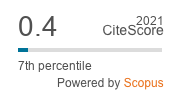New evidence of pseudo scorpion Ellingsenius indicus Chamberlin as predator of Indian honey bee Apis cerana F.
DOI:
https://doi.org/10.33307/entomon.v41i4.226Keywords:
Indian honey bee, wall hives, Apis cerana, pseudo scorpion, predator, Ellingsenius IndicusAbstract
Traditional wall hives in the two villages of Kullu district, Himachal Pradesh namely Bhindi and Daula, recorded a heavy mortality of Indian honey bees (Apis cerana) due to the attack of an arachnid predator identified as a pseudo scorpion Ellingsenius indicus. It was observed that the pseudo scorpions did not venture the comb full of bees but attacked only those bees which were either moving in isolation or in groups of 1-3 or those coming and going to the hive entrance for foraging. There was a complete loss of bees in three colonies whereas in other two colonies more than 70% of worker mortality was noticed. The observations recorded from the wall hives as well as from the laboratory experiments, revealed that generally 1-3 pseudo scorpions (E. indicus) caught hold of the single bee preferably from its legs and sometimes from its wings and did not leave the bee from their grip so long it was not dead.
Downloads
Published
How to Cite
Issue
Section
License
Copyright (c) 2016 ENTOMON

This work is licensed under a Creative Commons Attribution-ShareAlike 4.0 International License.


